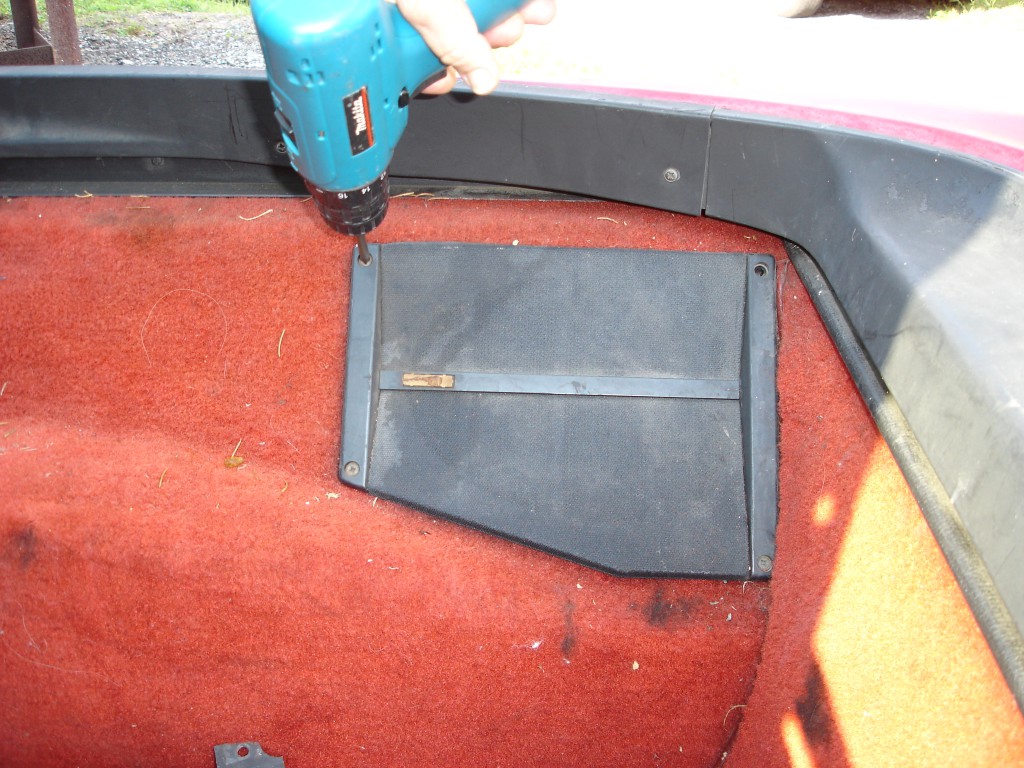
If you own a C-4 equipped with Bose sound system, you will eventually need Bose amplifier repair or replacement. Every Bose sound system equipped C-4 uses one amplifier per speaker. This is the weak link. Amplifier capacitors are filled with electrolytic fluid which ultimately leaks out onto the circuit board causing failure. If the leak is slow, the amplifier's circuit board can be damaged beyond repair. Electrolytic fluid is acidic and will corrode anything it touches.
It is common to have multiple amplifier failures at one time. In most situations, you suddenly lose sound from a particular speaker. There have also been situations where all amplifiers fail. If one or two speakers stop working, check the amplifiers. When the radio receiver fails all sound output will be lost.
There are some differences in the early and late C-4 receivers. Early models (1984-1989) have integrated radio control head and receivers, while later models (1990-1996) have a separate receiver. The radio receiver is located under the passenger side dash in 1990-1993 cars; it's located behind the passenger seat in the rear compartment of 1994-1996 Corvettes. Some failed 1990-1996 receivers will result in a cessation of sound output. The 1990-1996 radio head is only for controlling the receiver and to play CD or cassettes. The sound bites go to the receiver for output to speakers.
There are simple tests that can be performed to check the integrity of the amplifiers. If all speakers go out at once, the Bose relay should be checked first. (The relay has also been known to cause a dead battery from time to time.) The amplifiers should be inspected for dark staining of the circuit board, any burnt wires, or an odor of burnt plastic.
A common problem with 1984-1989 cars is water in the speaker/amplifier enclosure located in the door. If the door drain is not working, the enclosure can be submerged, allowing water to seep inside. The enclosure is sealed, but if it has been opened and the gasket was damaged, even rain water may seep inside through a bad outside seal strip. Severe radio receiver water damage may also occur from a leaking rear hatch window in 1994-1996 Corvettes. In some cases, the receiver is submerged in the compartment.
Speakers can be tested with an AA 1.5 volt battery. The receiver output can be checked with a voltmeter for varying current output to make sure the amplifier is receiving a signal. If adjusting the radio control knobs on 1984-1989 cars produces static or noise, the radio has a problem, not the speakers or amps. In some cases, just touching the control knobs causes static.
Removing the speaker/amplifier enclosure is not too difficult, except on 1990-1996 models. The front speaker enclosure is under the sill cover and requires sill removal to access. The cover sticks to the sill so care must be taken during removal. Slowly lift one side of the cover so the bond can loosen from the sound deadener. Try to avoid getting the sound deadener material on your clothes or skin because it is difficult to remove. Once the speaker/amplifier enclosures are removed, the speakers and amplifiers can be tested for proper signals.
You can repair or replace the amplifiers one at a time. If you are repairing the original amplifiers, you may want to do them all to avoid further circuit board damage. There are options: repair, replace the amplifiers, or get rid of the system altogether. Changing the system is costly because all the components must be replaced and the wiring must be modified. Although the original Bose system may not be capable of extreme bass, once repaired it is a high quality system that can be very reliable.
Beware of NOS (New Old Stock) amplifiers that are being sold as correct replacements; they may have different part numbers. The amplifiers are matched units to the receiver and, in some instances, sold as correct matching units from another application, which can degrade sound output. The part numbers must be the same as what was removed for proper operation. Don't forget that NOS amplifiers may be working now, but how long will it be before they have capacitor issues?

The Bose amplifier relay (CC # 244409) is located under the passenger side dash on 1984-1989 cars. Unfortunately, you can only feel the relay, but the wiring is visible from under the dash. Follow the wiring to the relay and then pull it downward to release it from its retainer. The relay has a four wire connector with an orange wire (12 volt battery power from the courtesy fuse), pink with black tracer (power out to amplifier when radio is on), pink wire (power only when radio on), and black wire (ground to chassis under right side kick panel). The black wire should have a low ohm reading (indicating a good ground at all times). The relay is working properly as long as the pink wire has 12 volts when the radio is turned on. If pink wire has 12 volts when the radio is off, the relay is sticking, which will cause a dead battery.
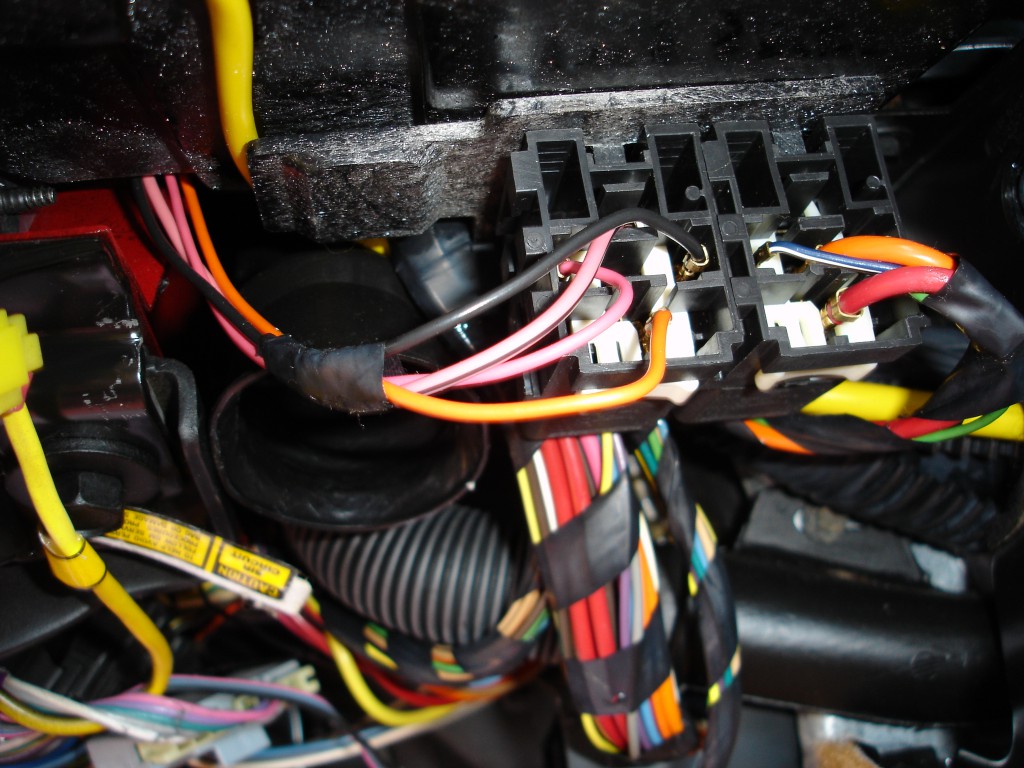
The Bose amplifier relay on 1990-1996 cars (CC # 594343) is located under the dash on the driver's side, to the right of the steering column. The carpeted knee bolster and aluminum reinforcement plate below the steering column were removed for this photo. The 1990 cars have the same wire colors and test procedure as the 1984-1989 cars. The 1991-1996 cars have a wire color change at the amplifier relay. The amplifier power wire from the relay is an orange wire in position 4 on the relay connector. The orange wire should have 12 volts when the radio is on.
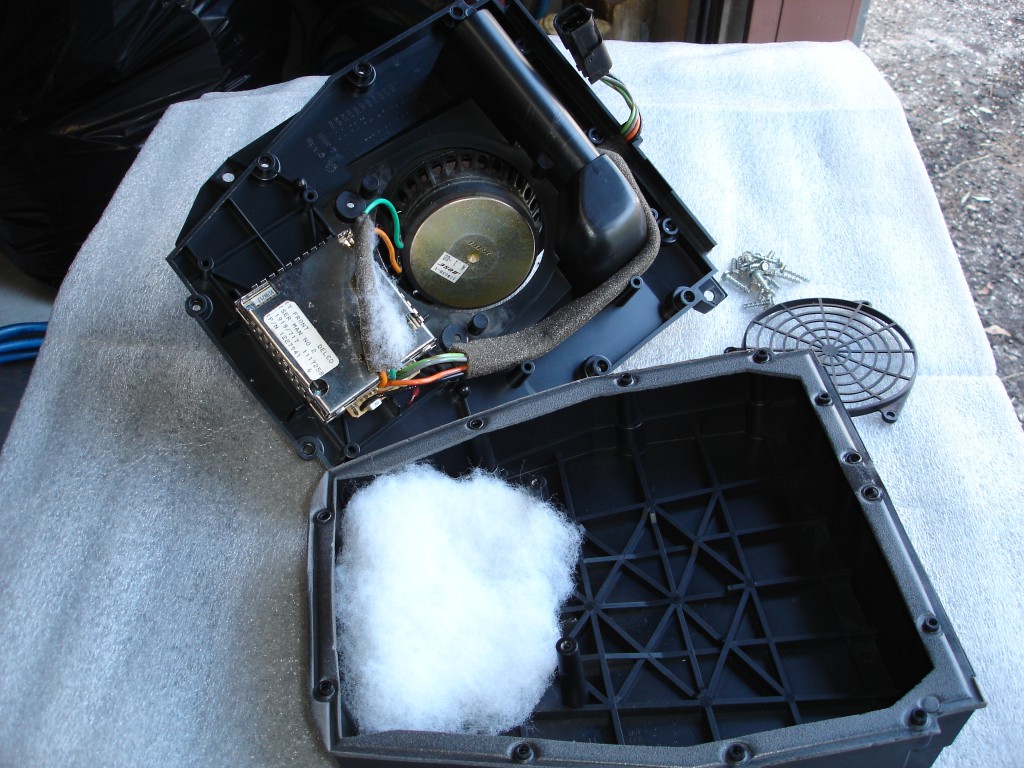
Removing the speaker enclosure is necessary to gain access to the amplifier. Disassemble the speaker enclosure with a ¼ inch socket. During reassembly, be sure to put the cotton sound deadening material back in place. Be careful to correctly reinstall the wire bundle right back where it came from to avoid piercing the wiring with a screw during assembly. In some cases, the enclosure has a channel that the wiring goes in to prevent wire damage.
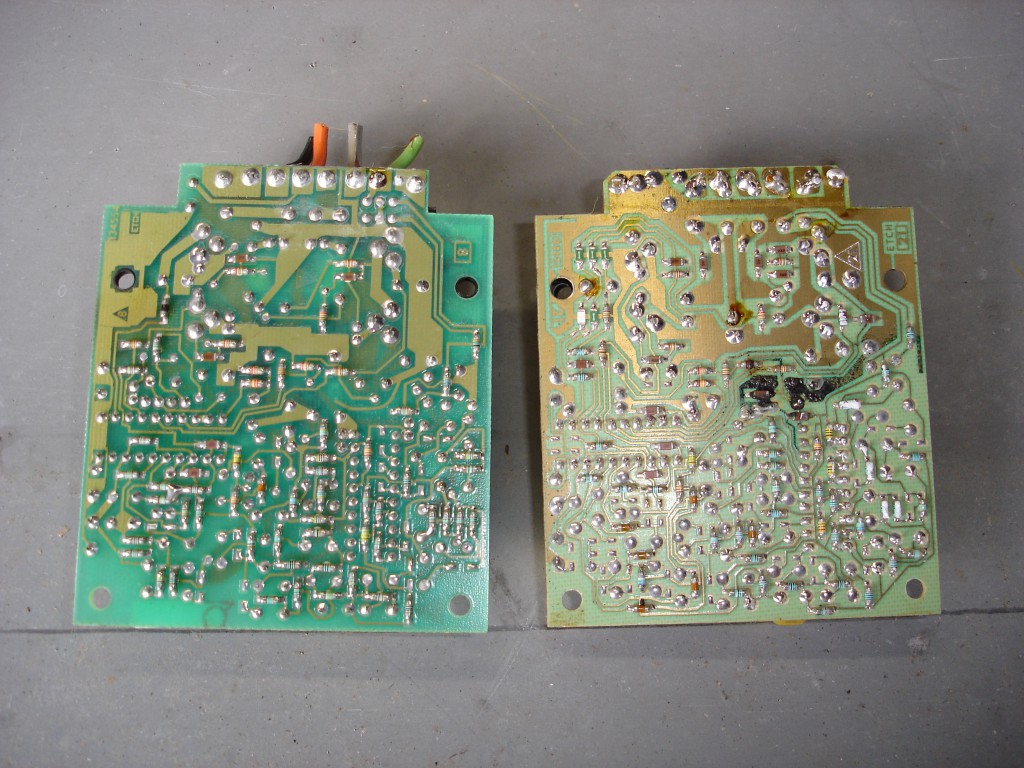
Here is a typical Bose amplifier with circuit board damage. The circuit board has a soldered wire harness on early cars. Later cars have harness connectors so the harness can be removed from the circuit board.
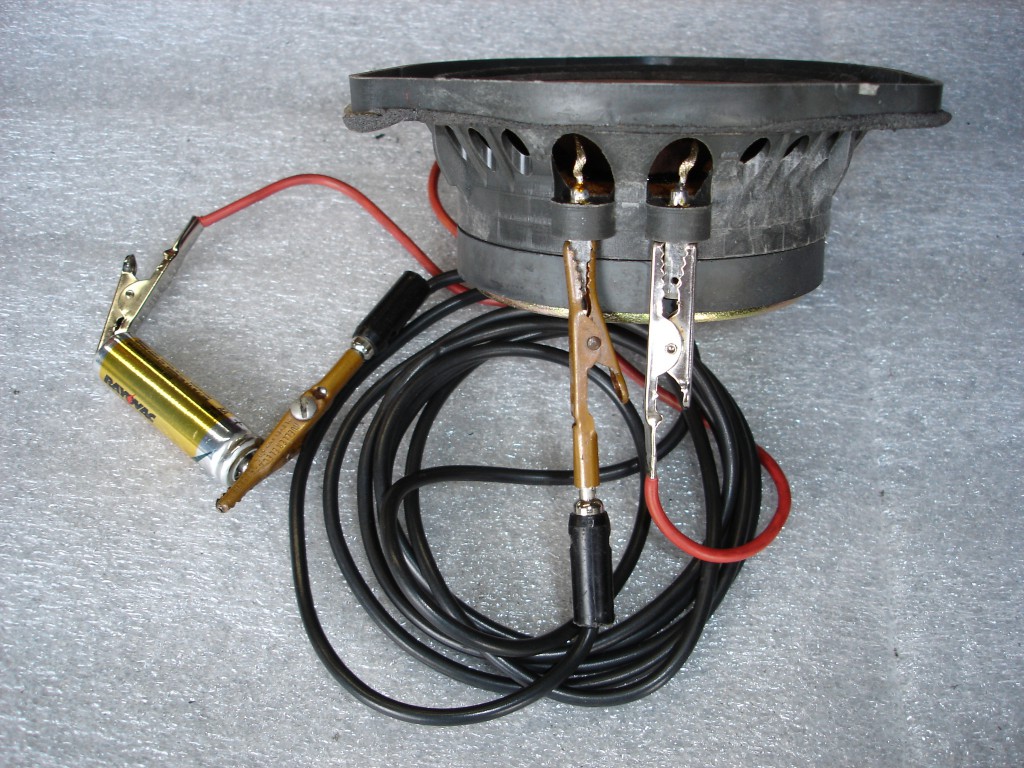
This is an easy way to check for proper speaker operation. If the speaker cone moves and a pop is heard when the battery is touched, the speaker is working.
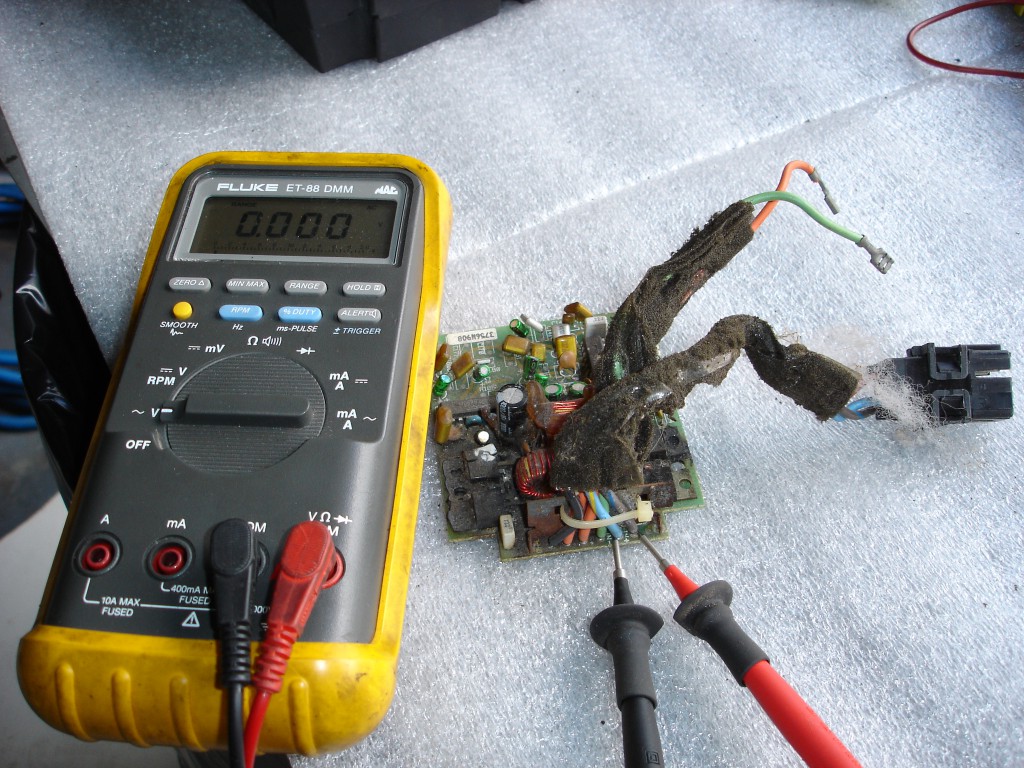
This is the setup required to check the amplifier for proper signal from the radio. Connect a voltmeter set on low AC voltage to terminals C and D. With the radio on high, the voltage should vary between 0 and 1 volt. Check the pink or orange wire at the amplifier (depending on the year of the car) and test for 12 volts when the radio is on. The black ground wire should be checked for low ohms also.
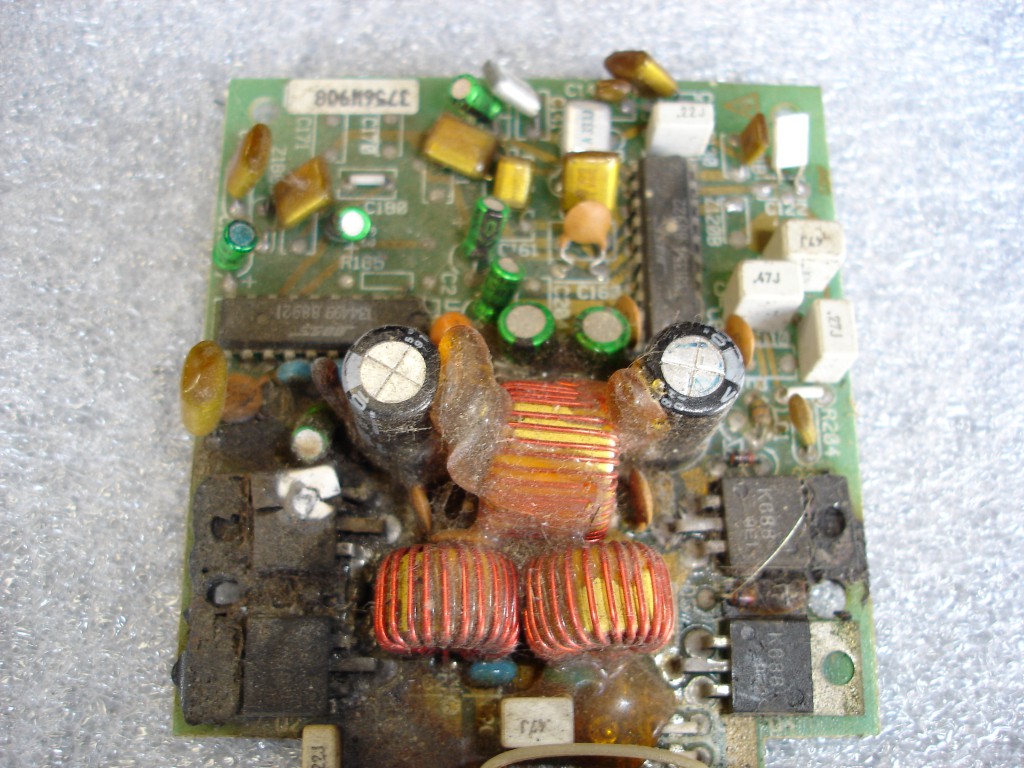
If you remove your amplifier and the metal covers to find this mess, replacement is most likely required. Door speaker amplifier item number 524024 is for 1984-1985 Corvettes, 524062 for 1990-1996 convertibles, 524065 for 1990-1996 coupes. The 1990-1996 rear speaker (left side) part number for convertibles is 524046 for and 524043 for 1990-1996 coupes. Use the same part numbers for 1984-1989 convertibles and coupes.
Story and photos courtesy Chris Petris
Posted by: buffybuffyrotenberge0270259.blogspot.com
Source: https://tech.corvettecentral.com/2014/11/c4-bose-woes-repairing-replacing-84-96-bose-speakers-amps/

0 Comments